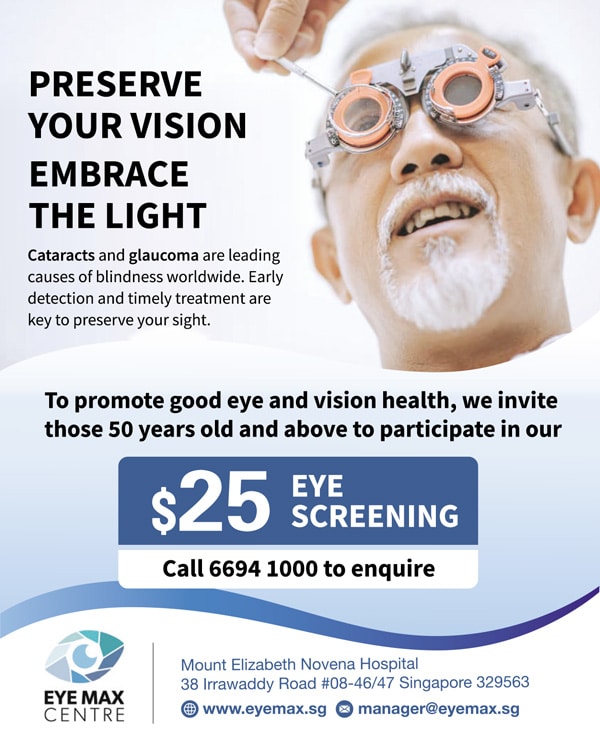SMOKY EYES

If your vision is getting blurry and a change of prescription does not help – it could be cataracts clouding your vision.
When eyes start to age, vision can start getting blurry for many reasons. One reason is cataract, which refers to a ‘clouding’ of the eye’s natural lens.
The lens, which lies behind the iris and the pupil, lets light into the eye and adjusts to focus light onto the retina for clear vision. Made up of water and protein, the lens is typically clear. As we age, the proteins clump together, resulting in formation of a cloudy area in the lens. Over time, this cloudy area known as a cataract progresses, making vision no longer as sharp. Other risk factors include:
- Excessive exposure to sunlight and ultraviolet radiation
- Prolonged use of steroids
- Diabetes
- Previous eye surgery, infection, inflammation or radiation
- Smoking
- In the young, cataracts can also develop due to eye trauma, genetic factors or infections during pregnancy

Foggy days are here
One of the most common complaints from those with cataracts is cloudy or blurred vision. Previously bright colours now appear faded or dull, and there are also complaints of glare and haloes, poor night vision or seeing double.
Treating cataracts
If you suspect that you or your loved one has a cataract, see an eye specialist. A complete eye examination will determine if anything else is contributing to the blurring of vision. While cataracts rarely require emergency surgery, you should not leave them until vision is severely impaired. Cataract surgery is a simple and reasonably safe procedure to restore vision, making it safer to perform activities like driving and sports.
Cataract surgery is performed as a day surgery. It involves removing the clouded lens and replacing it with a clear artificial lens called an intraocular lens implant. Refractive errors (myopia, hyperopia, astigmatism) and even presbyopia can be corrected during cataract surgery.

The risks of cataract surgery
Among the risks is infection which happens infrequently, about 1 in 1,000 surgeries. Other potential complications include intra-operative break in capsular bag, bleeding, post-operative retinal detachment and surprise refractive outcomes.
The procedure
An anaesthetic eyedrop is used to numb your eye, and dilating eyedrops are used to facilitate removal of the cataract. The surgery usually lasts between 10 and 30 minutes and is almost painless. You will be mildly sedated, but you will still be able to hear your surgeon communicating with you.
What happens after surgery?
A clear protective shield will be placed over the operated eye, to be worn at night for about 1 to 2 weeks to prevent accidental trauma during sleep. Once the sedative effects wear off within an hour, you can go home.
Mild foreign body sensation is normal after cataract surgery. The visual improvement is almost instantaneous, and by the next morning, most people are able to see down to the smallest letters on the distance chart without glasses. Reading ability without glasses is dependent on the type of intraocular lens implanted.
You will need to use eyedrops including antibiotics and steroids for 1 month after the surgery.
Cataracts never recur, but the capsular bag holding the lens implant can become cloudy over time, depending on the activity of residual cells which can proliferate and cause a spider web-like opacification of the bag. This can be treated with a painless laser procedure under topical anaesthesia. The laser is used to create a central opening in the opacified bag to restore clear vision.
Cataract Screening
If your loved one or yourself is experiencing cloudy/smoky vision or symptoms of cataract including double vision and impaired colour perception, and will like to see a cataract doctor, please contact Eye Max Centre at +65 6694 1000 or manager@eyemax.sg. For more information, visit our cataract page.

